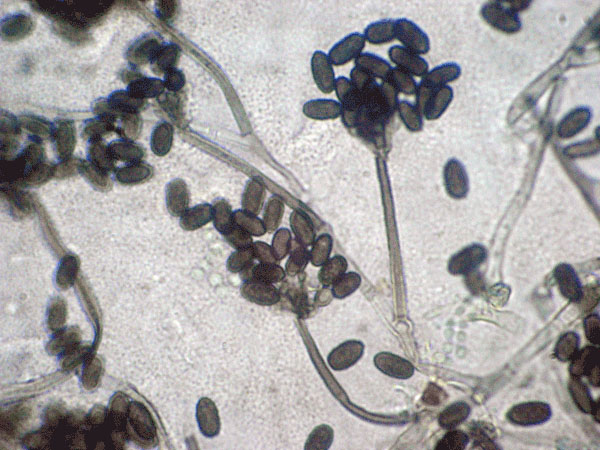The Little Fungus That Caused Big Problems

Black mold under the microscope
Black mold (also known as Stachybotrys atra or Stachybotrys chartarum) is one of the most infamous types of toxic molds because it contains mycotoxins.
Mycotoxins are any type of toxic substance that a fungus produces. Black mold is a greenish-black mold with a consistency like gelatin, and it is also slimy. If it’s water source runs out, it might look dry and powdery.
According to healthfulhome.com, black mold may cause respiratory problems, skin inflammation, hemorrhage, irritation of the mucous membranes, damage to internal organs, mental impairment, fatigue, nausea, and immune system suppression.
It often forms in warm areas where there is a lot of moisture. The mold needs a lot of moisture for at least a week before it can grow. This mold grows on material with a low nitrogen content and a high cellulose content, including fiberboard, plasterboard, paper, dust, and lint–all things in ample supply in schools.
People are advised to call in an expert to identify the mold, and if it is toxic black mold, they should not try to remove it. This is because the mold could release more harmful spores into the air if disturbed.
It is better to leave it to the experts. Toxic black mold can cause permanent damage to your health, and can even kill you in extreme amounts.
The longer you are around this type of mold, the more damage it will do to your health.
There were severe effects at Coleytown Middle School. Sara De Pinho, a sixth grader who was at Coleytown, explained the symptoms of the mold, talking about how there was a long line to nurse’s office, and there were many people with stuffy noses or throats that got clogged up.
Some of the more severe symptoms included fainting. She added, “Even one teacher fainted. I remember, I was walking through the hallway to go to the bathroom, and I just see someone randomly faint in the hallway, and so I asked to go to the nurse’s office. They bring her in and just say, ‘Oh, we’ll add her to the list.’”


